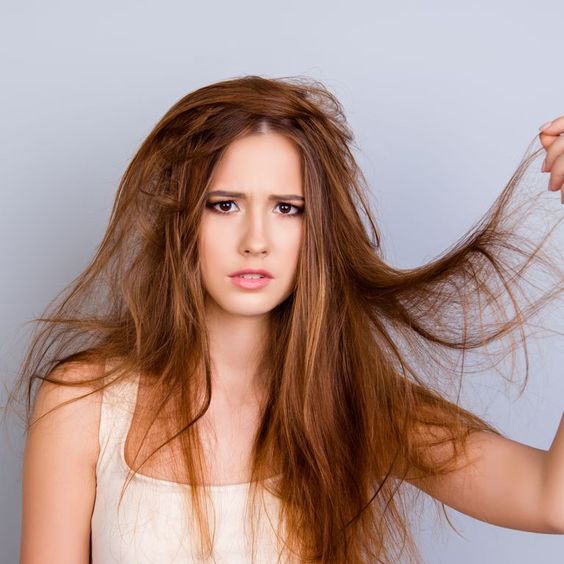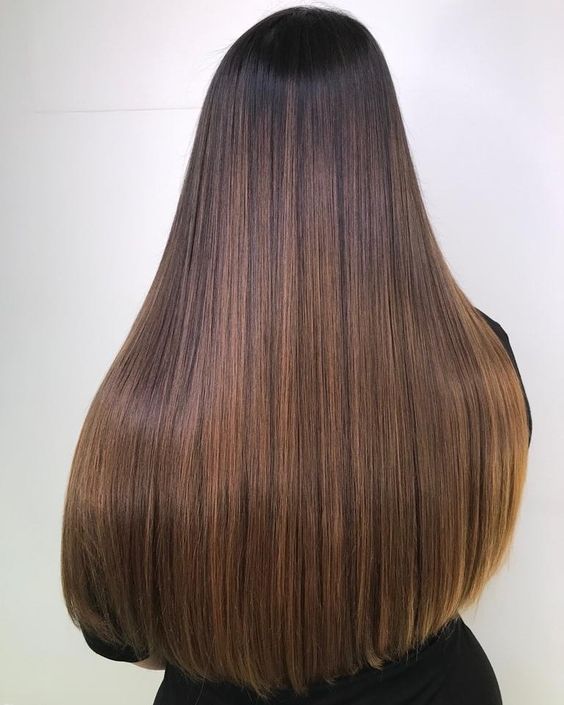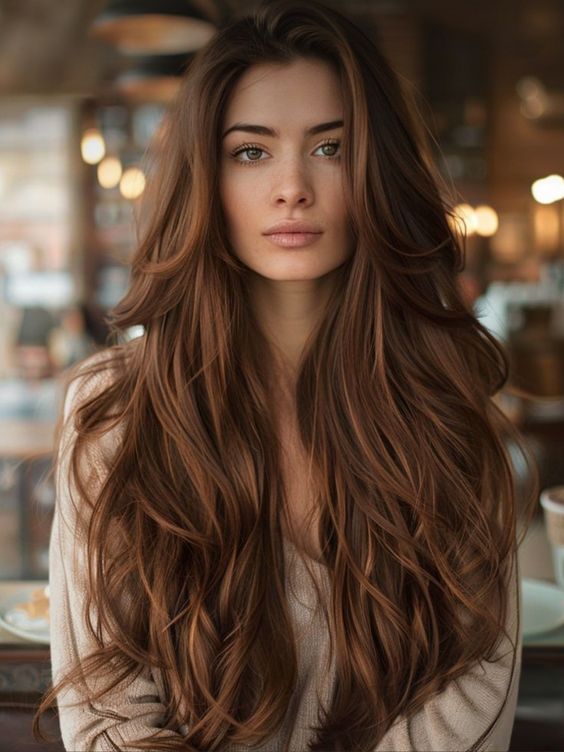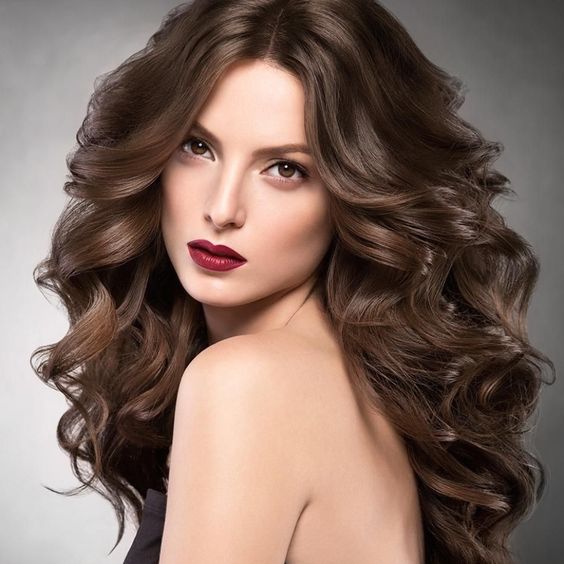To care for damaged hair, use nourishing shampoos and conditioners. Avoid excessive heat and chemical treatments.
Damaged hair requires special attention to restore its health and vitality. Regular use of nourishing shampoos and conditioners helps replenish lost moisture and nutrients. Limiting the use of heat styling tools and avoiding harsh chemical treatments can prevent further damage.
Incorporating hair masks and leave-in conditioners into your routine provides deep conditioning benefits. Trimming split ends regularly promotes healthier hair growth. A balanced diet rich in vitamins and minerals supports overall hair health. Staying hydrated and protecting hair from environmental stressors like sun and pollution are also crucial. With consistent care, you can rejuvenate and strengthen damaged hair, making it look and feel healthier.
Causes Of Damage
Taking care of damaged hair requires understanding what causes the damage. Many factors contribute to hair damage, and knowing these can help prevent further harm. Let’s explore the main causes of hair damage.
Heat Styling
Heat styling tools like curling irons, straighteners, and blow dryers can be harsh on your hair. High temperatures strip moisture from your hair, making it dry and brittle. Frequent use of these tools can lead to split ends and breakage.
Here are some common effects of heat styling:
- Dryness
- Frizz
- Split ends
- Breakage
Protecting your hair from heat is crucial. Always use a heat protectant spray before styling. Try to limit the use of these tools to a few times a week. Opt for lower heat settings to minimize damage.

Chemical Treatments
Chemical treatments like coloring, perming, and relaxing can alter your hair’s natural structure. These treatments often use strong chemicals that can weaken your hair strands. Over time, this can lead to significant damage.
Common chemical treatments include:
| Type | Effect |
|---|---|
| Hair Coloring | Can cause dryness and breakage |
| Perming | Can lead to frizz and split ends |
| Relaxing | Can weaken and thin the hair |
To reduce damage from chemical treatments, space them out as much as possible. Always follow up with deep conditioning treatments to restore moisture and strength.
Environmental Factors
Environmental factors like sun exposure, pollution, and harsh weather conditions can also damage your hair. UV rays from the sun can break down hair proteins, leading to dryness and color fading.
Pollution can cause buildup on your scalp, making your hair look dull and lifeless. Harsh weather, like wind and extreme temperatures, can also affect your hair’s health.
Protect your hair from environmental damage by:
- Wearing a hat or scarf when outdoors
- Using hair products with UV protection
- Rinsing your hair after exposure to pollutants
Regular washing and using hydrating products can help maintain your hair’s health despite environmental challenges.
Signs Of Damaged Hair
Taking care of damaged hair can feel like an uphill battle. Recognizing the signs of damaged hair is crucial for effective treatment. Damaged hair often shows specific symptoms that indicate it needs extra care and attention. Let’s explore these signs in detail.
Brittleness
Brittleness is one of the most common signs of damaged hair. Hair becomes brittle when it loses its natural moisture and elasticity. This condition makes hair prone to breakage and split ends.
Common causes of brittleness include:
- Overuse of heat styling tools like straighteners and curling irons
- Excessive chemical treatments such as bleaching and dyeing
- Environmental factors like sun exposure and wind
- Inadequate hydration and poor diet
Symptoms of brittle hair include:
- Hair that snaps easily when brushed
- Rough texture and frizz
- Lack of elasticity, making it hard to style
To manage brittleness, consider these tips:
- Use moisturizing shampoos and conditioners
- Limit the use of heat styling tools
- Incorporate a balanced diet rich in vitamins and minerals
Dullness
Dullness is another clear sign of damaged hair. Healthy hair shines because the cuticle layer is smooth and reflects light. When the hair cuticle is damaged, it loses its luster and appears dull.
Factors contributing to dullness:
- Build-up of styling products and residues
- Frequent washing with harsh shampoos
- Exposure to chlorine and saltwater
- Dehydration and lack of essential nutrients
Indicators of dull hair:
- Lack of natural shine, appearing lifeless
- Hair feels rough and coarse to the touch
- Color fades quickly, losing vibrancy
To restore shine, try these methods:
- Use clarifying shampoos to remove build-up
- Apply hair masks and oils regularly
- Protect hair from harsh environmental factors
Split Ends
Split ends are a telltale sign of damaged hair. They occur when the hair shaft splits into two or more fragments. This usually happens at the ends of the hair but can appear anywhere along the strand.
Related Article: Natural Hair Care Tips: Transform Your Tresses Naturally
Causes of split ends:
- Frequent use of hot styling tools
- Rough handling of hair, such as aggressive brushing
- Environmental stressors like sun and wind
- Skipping regular trims
Symptoms of split ends:
- Frayed and uneven hair tips
- Hair tangles easily
- Hair appears thinner at the ends
To manage and prevent split ends:
- Trim hair every 6-8 weeks
- Use leave-in conditioners and serums
- Be gentle when detangling hair
Daily Care Routine
Dealing with damaged hair can be challenging, but a daily care routine can make a significant difference. Proper care can restore health and shine to your locks. Let’s explore some essential steps to take for maintaining damaged hair.

Gentle Washing
Washing your hair gently is crucial for damaged hair. Use a mild shampoo free from sulfates and parabens. These chemicals can strip natural oils and worsen damage.
Also Read: DIY Hair Care Remedies: Unlock Gorgeous Locks Naturally
- Use lukewarm water: Hot water can dry out your scalp and hair.
- Massage the scalp gently: Use your fingertips to massage, not your nails.
- Limit washing to 2-3 times a week: This helps retain natural oils.
Choosing the right shampoo is important. Look for products with ingredients like:
| Ingredient | Benefit |
|---|---|
| Argan Oil | Moisturizes and strengthens hair |
| Keratin | Repairs damaged hair |
| Aloe Vera | Soothes and hydrates scalp |
Drying your hair properly is also key. Use a soft towel to pat your hair dry. Avoid rubbing as it can cause breakage. If you use a hair dryer, keep it on a cool setting.
Conditioning Tips
Conditioning is vital for damaged hair. It helps restore moisture and makes hair more manageable.
- Use a deep conditioner once a week: This provides extra moisture.
- Apply conditioner correctly: Focus on the ends of your hair, where damage is most prevalent.
- Leave the conditioner in for a few minutes: Let it penetrate the hair shaft.
Choosing the right conditioner is crucial. Look for products with:
- Shea Butter: Provides deep hydration.
- Silk Proteins: Adds smoothness and shine.
- Vitamin E: Helps repair and protect hair.
Rinsing with cold water can seal the hair cuticle, making it look shinier and healthier. Always rinse out conditioner thoroughly to avoid buildup.
Avoiding Over-washing
Over-washing can strip your hair of natural oils, leading to dryness and damage. Here are some tips to avoid over-washing:
- Use dry shampoo: It absorbs excess oil and keeps hair looking fresh.
- Wear a shower cap: This prevents your hair from getting wet during daily showers.
- Space out your washing days: Aim for every 2-3 days instead of daily.
Signs of over-washing include:
| Sign | Description |
|---|---|
| Dry, brittle hair | Hair feels rough and breaks easily. |
| Oily scalp | Scalp produces more oil to compensate for dryness. |
| Faded color | Hair color fades quickly. |
Adjusting your routine can help maintain the natural balance of oils in your hair, leading to healthier and more resilient locks.
Nourishing Treatments
Damaged hair requires special care and attention to regain its health and shine. Nourishing treatments are essential for repairing and revitalizing damaged strands. These treatments help restore moisture, strengthen hair, and prevent further damage. Below, we explore some effective nourishing treatments that can breathe new life into your hair.
Hair Masks
Hair masks are intensive treatments designed to deeply condition and repair damaged hair. They usually contain rich ingredients that penetrate the hair shaft, providing much-needed hydration and nourishment. Using a hair mask once a week can transform dry, brittle hair into soft, shiny locks.
- Moisturizing Masks: These masks contain ingredients like honey, avocado, and aloe vera that hydrate and soften hair.
- Protein Masks: Ideal for strengthening hair, these masks often include keratin, collagen, and egg proteins.
- DIY Options: You can make your own hair masks using natural ingredients like coconut oil, yogurt, and banana.
Here’s a simple table to help you choose the right hair mask:
| Hair Type | Recommended Mask |
|---|---|
| Dry Hair | Moisturizing Mask |
| Weak Hair | Protein Mask |
| Color-Treated Hair | Color-Safe Mask |
Oils And Serums
Oils and serums are essential for adding shine and reducing frizz in damaged hair. They can also help in sealing split ends and providing a protective layer against environmental damage. Applying oils and serums to your hair can make it look healthier and more manageable.
- Argan Oil: Known as “liquid gold,” argan oil is rich in vitamins and antioxidants that nourish hair.
- Coconut Oil: This oil penetrates deeply into the hair shaft, providing intense hydration and reducing protein loss.
- Hair Serums: Serums like silicone-based ones create a protective barrier, adding shine and reducing frizz.
Here are some tips for using oils and serums:
- Application: Apply a small amount to damp hair before styling.
- Frequency: Use oils 2-3 times a week and serums daily for best results.
- Comb Through: Distribute evenly using a wide-tooth comb.
Leave-in Conditioners
Leave-in conditioners are lightweight treatments that you apply to your hair after washing and before styling. They provide continuous hydration and protection throughout the day. These conditioners are perfect for keeping hair soft and manageable without weighing it down.
- Hydrating Leave-Ins: These conditioners contain ingredients like glycerin and hyaluronic acid that draw moisture into the hair.
- Strengthening Leave-Ins: Ideal for weak hair, these contain proteins and amino acids to reinforce hair structure.
- Heat Protectant Leave-Ins: These protect hair from the damaging effects of heat styling tools.
Here’s a quick guide to using leave-in conditioners:
- Apply to Damp Hair: After washing, apply leave-in conditioner to towel-dried hair.
- Focus on Ends: Concentrate on the ends of your hair, where damage is often most severe.
- Comb Through: Use a wide-tooth comb to distribute the product evenly.
Best Ingredients
Hair care for damaged hair often requires special attention and the right ingredients. Using the best ingredients can help restore your hair’s health and shine. Let’s explore some of the most effective ingredients for repairing damaged hair.
Natural Oils
Natural oils are excellent for damaged hair. They provide deep hydration and nourishment.
Argan oil is a popular choice. It is rich in vitamins and antioxidants. It helps repair split ends and adds shine to dull hair.
Coconut oil is another fantastic option. It penetrates deep into the hair shaft. It moisturizes and strengthens hair from within.
Here are some benefits of using natural oils:
- Hydration: Keeps hair moisturized.
- Nourishment: Provides essential nutrients.
- Protection: Shields hair from environmental damage.
Let’s look at a comparison table of these oils:
| Oil | Benefits |
|---|---|
| Argan Oil | Repairs split ends, adds shine, rich in vitamins |
| Coconut Oil | Deep penetration, moisturizes, strengthens hair |
Proteins
Proteins are essential for hair repair. They rebuild damaged hair structure.
Keratin is a key protein. It makes hair stronger and smoother.
Silk protein is another valuable ingredient. It adds softness and shine to hair.
Benefits of using proteins in hair care:
- Strength: Rebuilds hair structure.
- Smoothness: Makes hair smooth and shiny.
- Elasticity: Increases hair’s flexibility.
Here’s a quick look at these proteins and their benefits:
| Protein | Benefits |
|---|---|
| Keratin | Strengthens hair, smoothens texture |
| Silk Protein | Adds softness, enhances shine |
Vitamins
Vitamins play a crucial role in hair health. They nourish and repair damaged hair.
Vitamin E is known for its antioxidant properties. It helps in repairing damaged hair follicles.
Vitamin A promotes healthy sebum production. It keeps the scalp hydrated.
Important vitamins for hair care include:
- Vitamin E: Repairs follicles, adds shine.
- Vitamin A: Promotes sebum production, keeps scalp healthy.
- Vitamin C: Boosts collagen production, strengthens hair.
Let’s summarize the benefits of these vitamins:
| Vitamin | Benefits |
|---|---|
| Vitamin E | Repairs follicles, adds shine |
| Vitamin A | Promotes sebum production, keeps scalp healthy |
| Vitamin C | Boosts collagen production, strengthens hair |
Protective Styles
Damaged hair needs tender care to restore its health and vitality. Using protective styles is an excellent way to shield your hair from further harm. Protective styles help reduce breakage, split ends, and dryness by minimizing manipulation and exposure to harsh elements. This section delves into various protective styles that can aid in your hair care journey.
Braids And Buns
Braids and buns are fantastic protective styles for damaged hair. They keep your hair tucked away, reducing the risk of breakage and split ends. Braids come in various styles, such as box braids, cornrows, and French braids. Buns, on the other hand, can be high, low, or even side buns. Here’s why they work:
- Minimal Manipulation: Once styled, braids and buns require less daily handling, reducing breakage.
- Protection from Elements: These styles shield hair from wind, sun, and pollution.
- Versatility: You can wear braids and buns in many different ways, keeping your look fresh.
For added protection, consider using satin or silk accessories. These materials are gentle on your hair and prevent frizz and breakage. Here’s a quick comparison table for choosing between braids and buns:
| Feature | Braids | Buns |
|---|---|---|
| Lasting Time | 2-8 weeks | 1-3 days |
| Maintenance | Low | Medium |
| Styling Options | High | Medium |
Loose Styles
Loose styles are another excellent option for protecting damaged hair. Loose styles allow your hair to rest and breathe without the tension of tight hairstyles. Here are some popular loose styles:
- Twist-outs: These create defined curls without heat, reducing damage.
- Braid-outs: Similar to twist-outs, but using braids instead of twists.
- Loose Waves: Achieved with braids or twists left overnight, giving a natural, wavy look.
Loose styles can be enhanced with leave-in conditioners and oils to keep hair moisturized. Here’s a simple routine for maintaining loose styles:
- Moisturize: Use a leave-in conditioner or hair oil.
- Detangle: Gently comb through with a wide-tooth comb.
- Style: Opt for twists or braids and leave them overnight.
- Refresh: Spritz with water and reapply conditioner or oil as needed.
Loose styles are great for everyday wear and can be easily refreshed to maintain their look and health benefits.
Avoiding Tight Hairstyles
Tight hairstyles can cause significant damage to already fragile hair. They can lead to breakage, scalp irritation, and even hair loss. It’s essential to avoid styles that pull tightly on your roots. Here’s why:
- Breakage: Tight styles put stress on hair strands, causing them to snap.
- Scalp Health: Excessive tension can irritate the scalp, leading to inflammation.
- Hair Loss: Continuous pulling can cause traction alopecia, a type of hair loss.
Instead, opt for looser, more forgiving styles. Here are some tips:
- Use Softer Accessories: Choose hair ties that are gentle and don’t pull on your hair.
- Loosen Up: If you feel tension, immediately loosen the style.
- Change Styles: Frequently switch up your hairstyles to avoid stress on the same areas.
Maintaining a gentle hair care routine is crucial for damaged hair. Avoid tight hairstyles to give your hair the best chance to recover and thrive.
Tools And Products
Damaged hair needs special care to restore its health. Using the right tools and products can make a huge difference. Here are some essential tools and products to help repair damaged hair.
Choosing The Right Brush
Using the right brush can minimize further damage to your hair. Here are some tips for selecting a brush:
- Boar Bristle Brushes: These are gentle and help distribute your hair’s natural oils.
- Wide-Tooth Combs: Ideal for detangling wet hair without causing breakage.
- Ceramic Round Brushes: Great for styling, as they reduce heat damage.
Avoid brushes with metal bristles or those with tightly packed synthetic bristles. They can pull and break fragile hair. Consider the following table for a quick comparison:
| Brush Type | Best For | Avoid |
|---|---|---|
| Boar Bristle | Distributing oils | Thick, curly hair |
| Wide-Tooth Comb | Detangling | Fine hair |
| Ceramic Round | Heat styling | Everyday use |
Heat Protectants
Heat styling tools can cause a lot of damage to your hair. Using heat protectants can help minimize this. Here are some benefits:
- Reduces Heat Damage: Forms a protective barrier on your hair.
- Locks in Moisture: Helps keep your hair hydrated.
- Improves Shine: Leaves your hair looking glossy.
When choosing a heat protectant, look for ingredients like silicones and natural oils. Here are some popular types:
- Sprays: Easy to apply and lightweight.
- Serums: Ideal for thicker hair types.
- Lotions: Great for all hair types and adds extra moisture.
Always apply heat protectant before using any heat styling tools. Ensure even coverage for the best protection.
Sulfate-free Shampoos
Sulfates can strip your hair of its natural oils, leading to dryness and damage. Sulfate-free shampoos are gentler and help maintain your hair’s natural moisture balance. Here are some key benefits:
- Gentle Cleansing: Cleans your hair without stripping essential oils.
- Reduces Frizz: Helps keep your hair smooth and manageable.
- Safe for Colored Hair: Maintains color vibrancy for longer.
When choosing a sulfate-free shampoo, look for natural ingredients like coconut oil, argan oil, and aloe vera. Here is a quick comparison:
| Ingredient | Benefit |
|---|---|
| Coconut Oil | Moisturizes and adds shine |
| Argan Oil | Nourishes and repairs |
| Aloe Vera | Soothes and hydrates |
Switching to sulfate-free shampoos can make a noticeable difference in the health of your hair over time.
Lifestyle Tips
Hair care for damaged hair requires more than just the right products. Lifestyle choices play a significant role in restoring your hair’s health. By adopting specific habits, you can rejuvenate your locks and maintain their natural beauty. Below, we explore essential lifestyle tips for repairing and caring for damaged hair.
Diet And Hydration
A balanced diet is crucial for hair health. The nutrients you consume directly impact hair strength and growth. Here are some vital dietary tips:
- Protein: Hair is made of keratin, a type of protein. Incorporate eggs, nuts, and lean meats.
- Omega-3 Fatty Acids: Found in fish, flaxseeds, and walnuts, they promote hair growth.
- Vitamins: Vitamin A, C, and E are essential for scalp health. Eat fruits and vegetables like carrots, oranges, and spinach.
- Iron: Low iron levels can lead to hair loss. Include leafy greens, beans, and red meat.
- Zinc: Helps repair hair damage. Find it in pumpkin seeds, chickpeas, and oysters.
Hydration is equally important. Water helps maintain hair moisture and elasticity. Aim to drink at least 8 glasses of water daily. If you exercise or live in a hot climate, increase your intake. Dehydration can make hair brittle and prone to breakage.
Stress Management
Stress has a significant impact on hair health. High stress levels can lead to hair loss and damage. Here are some effective stress management techniques:
- Exercise Regularly: Physical activity releases endorphins, which reduce stress.
- Meditation and Yoga: These practices help calm the mind and reduce anxiety.
- Adequate Sleep: Aim for 7-9 hours of sleep per night to allow your body to repair and grow hair.
- Hobbies and Leisure Activities: Engage in activities you enjoy to take your mind off stressors.
Stress can cause hormonal imbalances that affect hair growth. Practicing mindfulness and maintaining a positive outlook can prevent stress-related hair issues. If stress feels overwhelming, consider talking to a professional.
Regular Trims
Regular hair trims are essential for maintaining healthy hair. Trimming removes split ends and prevents further damage. Here’s a simple guide to trimming:
| Hair Type | Trimming Frequency |
|---|---|
| Short Hair | Every 4-6 weeks |
| Medium Hair | Every 6-8 weeks |
| Long Hair | Every 8-12 weeks |
Split ends can travel up the hair shaft, causing more damage. Regular trims keep hair looking healthy and prevent breakage. Visit a professional stylist or learn to trim at home with sharp scissors.
Trimming also encourages hair growth by removing damaged ends. Healthy hair grows faster and looks shinier. Make trims a routine part of your hair care regimen for the best results.

Credit: www.usatoday.com
Frequently Asked Questions
How Can I Repair Damaged Hair?
Repair damaged hair by using deep conditioning treatments and avoiding heat styling. Trim split ends regularly. Use a wide-tooth comb on wet hair.
What Ingredients Should I Look For In Hair Masks?
Look for ingredients like keratin, argan oil, and coconut oil in hair masks. These nourish and strengthen damaged hair effectively.
Can Natural Remedies Help Damaged Hair?
Yes, natural remedies like coconut oil and aloe vera can help repair damaged hair. They provide essential nutrients and moisture.
How Often Should I Trim Damaged Hair?
Trim damaged hair every 6-8 weeks to remove split ends. Regular trims promote healthier hair growth and prevent further damage.
Conclusion
Healthy hair is achievable with the right care routine. Use nourishing products and avoid excessive heat. Consistent trims and protective hairstyles also help. Embrace these tips and watch your hair transform. Remember, patience and persistence are key for restoring damaged hair.
Treat your locks with love and they’ll thank you.




